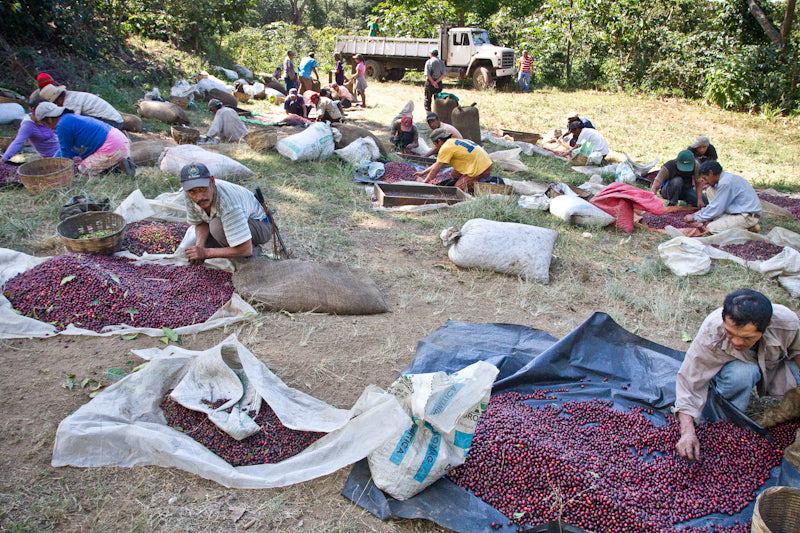Introduction
Coffee, is a miracle and owes its diverse range of flavors to a complex and meticulous journey from bean to cup. One crucial step in this journey is the coffee processing method, with "washed" being one of the most widely used. In this blog post, we will take you on a fascinating journey through the washed coffee process and delve into how it profoundly influences the flavors of your favorite morning brew.

Step 1: Harvesting Ripe Coffee Cherries
The process begins in coffee farms where skilled harvesters carefully pick only the ripest coffee cherries. This meticulous selection is crucial because underripe or overripe cherries can negatively impact the final flavor profile of the coffee. Underripes will give an astringent mouth drying experience and lots of sour, acidy notes. Overripes tend to bring a lot of overripe fruit, funk and other mouth clinging feelings.

Step 2: Depulping
Once harvested, the cherries are transported to the processing facility. Sometimes this is on the farm, other times it is at a nearby washing station. For all the top quality coffees we buy the cherries are placed in some form of float or density separation tank to eliminate the worst beans before depulping. The first step here is depulping, where the outer skin is removed from the cherries, revealing the inner beans. This step is critical for washed coffee, as it allows for the effective removal of any unwanted residues. Coffee is a drupe so it has multiple layers.
Step 3: Fermentation
The depulped beans are then placed in fermentation tanks, typically filled with water although sometimes they are left 'dry' without added water. This is where the magic happens. Microorganisms naturally present on the beans and in the air interact with the sugars and mucilage left on the beans, breaking them down over a period of hours or days, depending on the desired flavor profile. During this fermentation, acids and enzymes play a significant role in shaping the coffee's final taste. As with all chemical cooks or fermentations, adjusting the time, temperature, sugars and microorganisms has far reaching effects on the flavors and aromas in your coffee.

Step 4: Washing
After the fermentation period, the coffee beans are thoroughly washed to remove all remnants of the mucilage. This process is why it's called "washed coffee." The cleanliness and precision of this step are crucial, as any remaining residue can alter the coffee's flavor because of how long the drying process is.
Effects on Coffee Flavors:
1. Brightness and Clarity:
The washed process is known for producing coffees with bright, clean, and distinct flavors. The removal of mucilage during washing ensures that the flavors are not overshadowed by the fruity and funky notes that can come from the mucilage or coffee skin, resulting in a cup with remarkable clarity.
2. Liveliness (called acidity):
Washed coffees often have a pronounced liveliness (called acidity) that is crisp and vibrant. This acidity is a product of the fermentation process, which allows for the development of various acids, such as citric and malic acids. These acids contribute to the coffee's lively and zesty character.
3. Floral and Fruity Notes:
The washed process can enhance the coffee's potential to showcase floral and sweet fruity notes. The controlled fermentation allows for the preservation of delicate aromas and flavors, making these coffees a favorite among those who appreciate complexity and nuance in their brews.
4. Consistency:
Washed coffees are known for their consistency from one batch to another. This predictability makes them a preferred choice for specialty coffee producers who want to maintain a specific flavor profile and meet the expectations of discerning consumers.

Conclusion
The washed coffee process is a remarkable journey that transforms raw coffee cherries into a beverage with a wide spectrum of flavors. From the moment ripe cherries are harvested to the meticulous washing and fermentation stages, every step contributes to the final cup's clarity, acidity, and nuanced flavors. Whether you savor the bright acidity of a Huehuetenango, Guatemala or the floral notes of an Ethiopian Yirgacheffe, understanding the washed coffee process offers a deeper appreciation for the artistry behind your daily brew. So, the next time you savor that meticulously brewed cup of washed coffee, you'll know that it's not just a beverage but a masterpiece of flavors crafted through a labor-intensive process.

